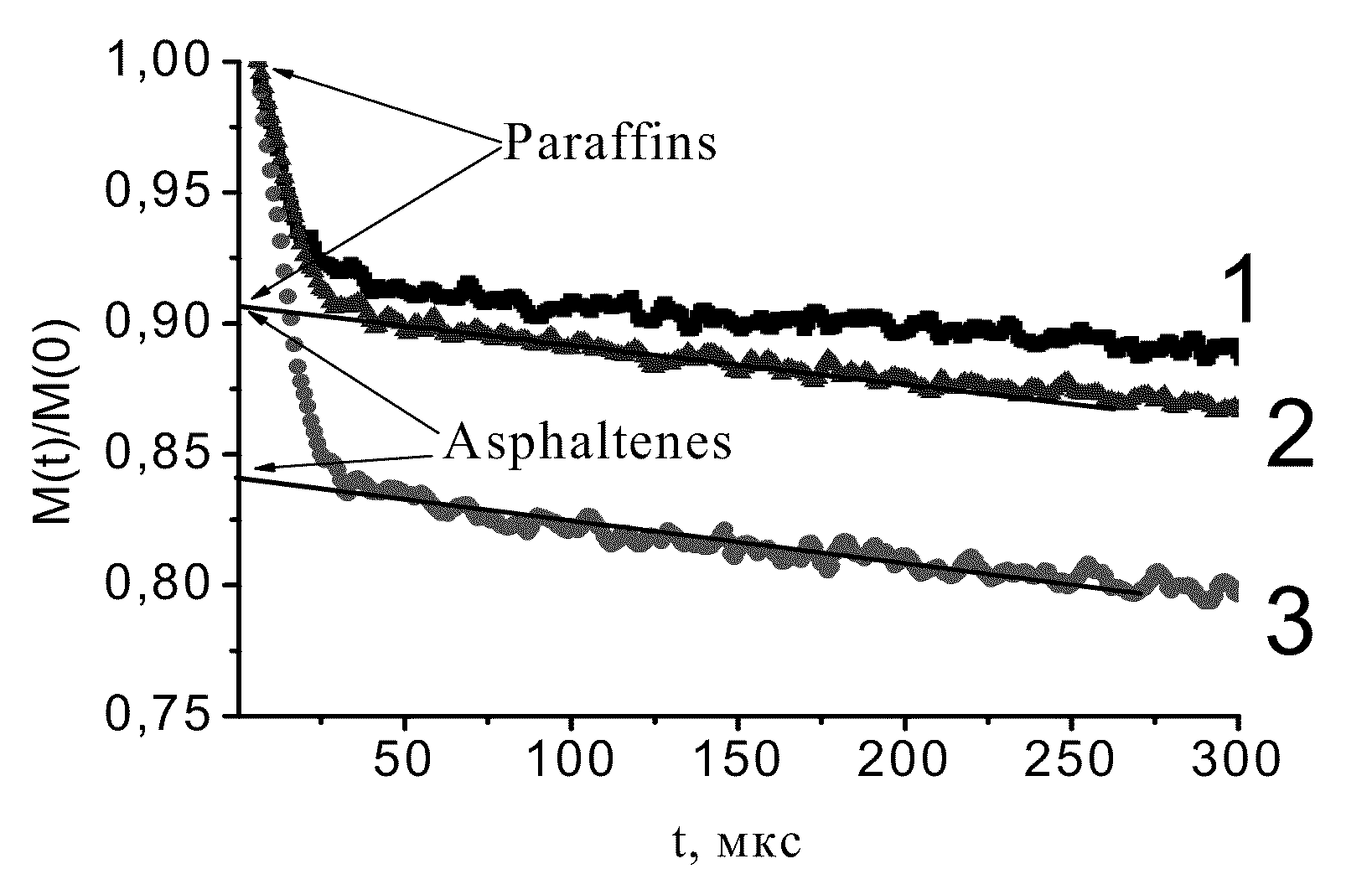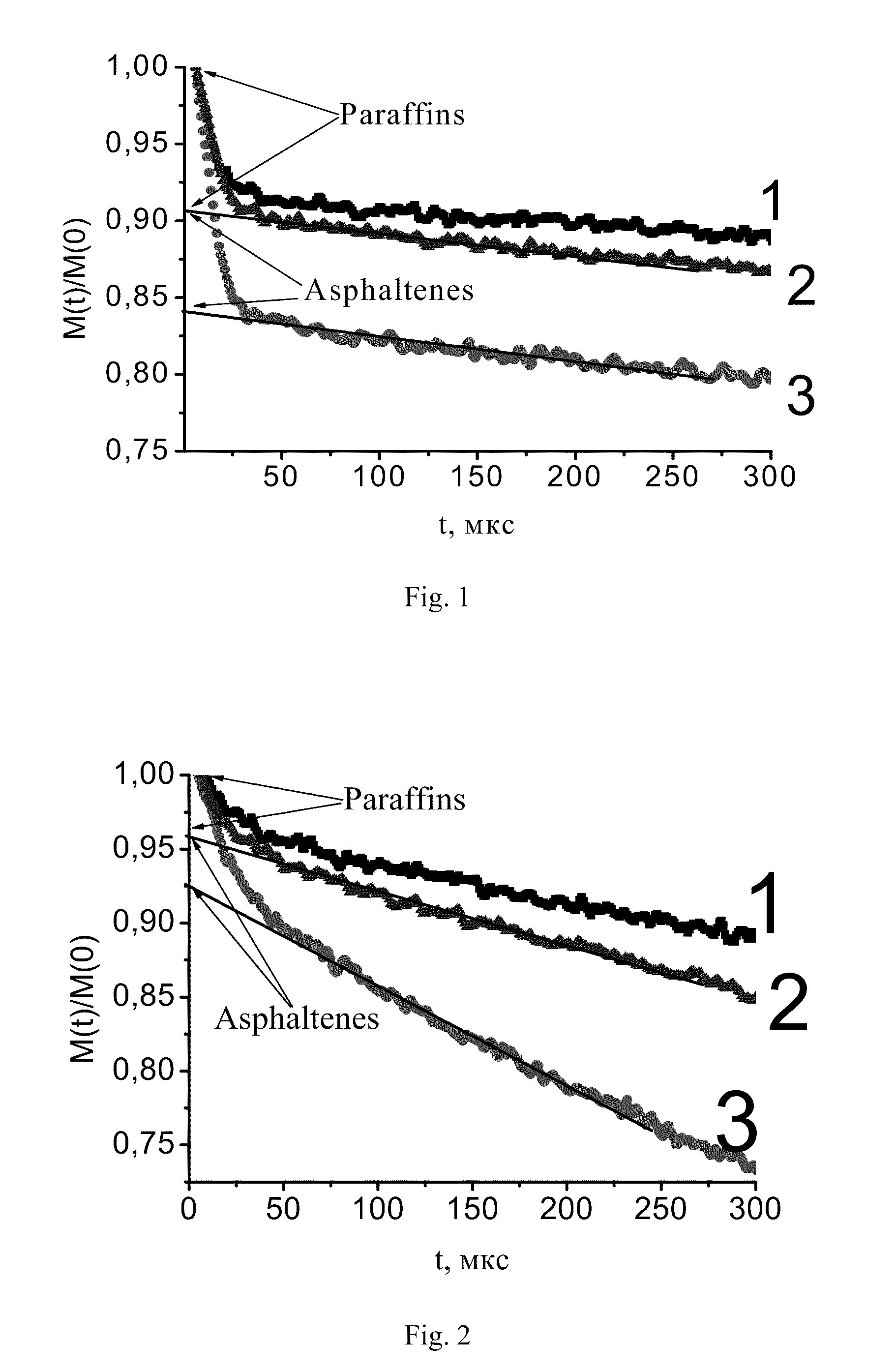Method for detecting paraffin wax and asphaltene content in oil
a technology of which is applied in the field of methods for detecting paraffin wax and asphaltene content in oil, can solve the problems of not always available information, and simple methods that do not allow us to determine the concentration of the heaviest oil fraction (paraffin wax and asphaltene)
- Summary
- Abstract
- Description
- Claims
- Application Information
AI Technical Summary
Problems solved by technology
Method used
Image
Examples
Embodiment Construction
[0011]Known methods for determination of paraffin wax and asphaltene concentration in oil are rather complex due to necessity of performing a number of operations and they are very time-consuming.
[0012]The engineering result to be achieved through the invention implementation is to obtain a simple and effective method for determination of paraffin wax and asphaltene concentration in oil, which could be applied either in laboratory conditions, or in a well in the real-time mode.
[0013]The above-mentioned engineering result is achieved through the extraction of three crude oil samples, two of which are solved in a solvent; thereafter, the solvent with light oil fractions is removed and asphaltenes are removed from one of the samples treated by the solvent. A nucleic magnetic resonance method is applied to all three samples to measure free inductance drop-down curves and to determine the ratio of solid hydrogen-containing fractions suspended in oil, to liquid hydrogen-containing fractio...
PUM
 Login to View More
Login to View More Abstract
Description
Claims
Application Information
 Login to View More
Login to View More - Generate Ideas
- Intellectual Property
- Life Sciences
- Materials
- Tech Scout
- Unparalleled Data Quality
- Higher Quality Content
- 60% Fewer Hallucinations
Browse by: Latest US Patents, China's latest patents, Technical Efficacy Thesaurus, Application Domain, Technology Topic, Popular Technical Reports.
© 2025 PatSnap. All rights reserved.Legal|Privacy policy|Modern Slavery Act Transparency Statement|Sitemap|About US| Contact US: help@patsnap.com


